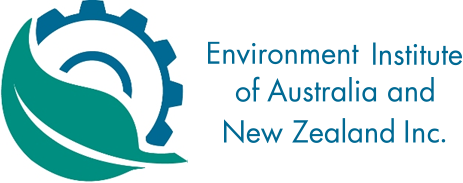-
Member Login
- Home
- About
- Institute Groups
- Membership
- Events
- News & Publications
- Institute Programs
- Resources
- Jobs Board
- Contact Us
- Site Info
Tips for new consultants
Zara Marais is a professional environmental scientist with AECOM’s Impact Assessment and Permitting team in Melbourne, Australia. Zara recently received the 2014 Tor Hundloe Award for Young Environmental Practitioner of the Year, which is awarded by the EIANZ for outstanding contributions to the environment profession by a young practitioner.
Like many graduates, I left university with slight apprehension and a handful of vague ideas about the future. I had spent most of my spare time volunteering with conservation organisations and enjoyed this work immensely. At the same time, I felt a need to broaden my horizons and try something new. I took the leap and applied for an environmental consulting job. Since joining AECOM in 2012 as a graduate environmental scientist, I haven’t looked back — simply because I’ve been too busy to look anywhere but forward. Drawing on my own experiences, I thought I would share three tips for new graduates entering the world of consulting:
1. Find a mentor or two
The best thing about joining your first company is that it immediately places you within reach of senior professionals in your field. Most are approachable, and many are willing to offer guidance and support if you ask for it. My own mentoring relationships have varied in purpose, formality and duration, but have all been valuable. Although your own company is a great place to find a mentor, the independent perspective of an external mentor can also be useful. Some industry associations hold social events for this purpose and some, like the EIANZ, even run mentoring programs. Having benefited greatly from the mentoring program offered by the New South Wales Division of the EIANZ, I’m currently involved in trying to roll the program out in Victoria. Keep an eye on the Victorian Division events section of the EIANZ website to find out more about participating in the program as either a mentor or mentee.
2. Join your industry or professional association
Obvious benefits of becoming a member of your professional association include gaining access to industry events and training, networking opportunities, and professional accreditation. If you take one step further and join their committees, you also stand to learn how to run successful events, be the first to hear industry news, and form friendships with some of the most passionate people in your profession. Less than a year after joining my local EIANZ committee, I was lucky enough to be able to attend the 2014 Annual Conference in Hobart, Tasmania — and even luckier to receive the Tor Hundloe Award. Although I suspect I’ve benefitted more from my involvement than they have, I hope to continue contributing to their work and building a stronger relationship between AECOM and the Institute.
3. Never stop applying
After surviving the graduate-recruitment process, you may be tempted to settle into your new desk, throw away your CV and breathe a sigh of relief. Although it will hopefully be some time before you apply for a new job, it’s a good idea to practice by applying for every internal project, promotion or committee that interests you. Even if you don’t succeed, you’re bound to learn something from the experience.
After replying to an email about an opportunity in AECOM’s Melbourne office, I’m now exploring a new city and working as the environment coordinator for a major electrical infrastructure project.
The other day I filled out a very different application, for an Indian business visa, after having successfully applied for the 2015 Pollinate Energy Young Professionals Program. In April this year AECOM will sponsor me to travel to Hyderabad with Pollinate to help them facilitate the distribution of socially and environmentally beneficial products to the city’s urban poor.
If you’re interested in learning more about Pollinate Energy and my experiences in India, check out the AECOM website or my Linkedin page.
We acknowledge and value the rights and interests of Indigenous Peoples in the protection and management of environmental values through their involvement in decisions and processes, and the application of traditional Indigenous knowledge.

